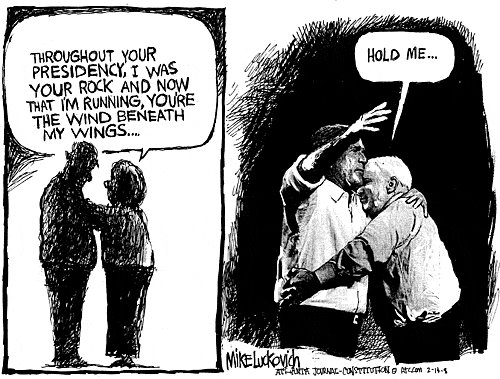Last month my youngest son and I went to Tennessee to visit relatives in Knoxville and to do some white-water rafting. We had rafted the Pigeon River last year and were looking forward to rafting the Ocoee River, the river used for rafting in the 1996 Olympic Games, which would take us to an area 25 miles north of Chattanooga, Tennessee.
And although the rafting on the Ocoee was breathtaking and well worth the 1 ½ hour drive from Knoxville it would end up being secondary to our visit to the Chattanooga and northern Georgia area.
If you’re interested in Civil War history, Chattanooga, Tennessee and just south of there in northern Georgia at a battlefield named Chickamauga near Ft. Oglethorpe, Georgia, is a place definitely worth the visit.
On September 19, 1863, 130,000 Union and Confederate troops battled for the control of Chattanooga at Chickamauga in ‘the bloodiest two-day battle of the Civil War’.
Confederate General Braxton Bragg and his 43,000-man Army of Tennessee along with an additional 23,000 reinforcements from Mississippi and Virginia were dug in 20 miles south of Chattanooga defending the ‘gateway to the heart of the Confederacy’ and Atlanta, Georgia.
Union Major General William S. Rosecrans and his almost 70,000 strong Army of the Cumberland had pursued Braggs from Murfreesboro where six months earlier, after a three day clash, Braggs and his army were forced to retreat to Chattanooga and into the area of northern Georgia.
In a densely wooded area called Chickamauga, which in Cherokee means ‘river of blood’, 130,000 men battled, many times hand to hand, for two days in what would be one of the Confederates biggest, albeit short-lived, victories of the war.
There were 34,000 casualties (1) in those two days of battle and although the Union had less casualties, they were forced to now retreat to Chattanooga, where from Lookout Mountain and Missionary Ridge the Confederates kept the Union army hemmed in for two months in an effort to ‘starve them out’.
Rosecrans would lose his command of the Army of Cumberland to Major General George H. Thomas, the ‘Rock of Chickamauga’ and Ulysses S. Grant, Major General Joseph Hooker and Major General William Tecumseh Sherman with an additional 50,000 Union reinforcements would eventually rout the Confederates two months later and capture Look Out Mountain, Missionary Ridge and the rest of Chattanooga region in what would become the ‘beginning of the end’ for the Confederacy.
The following spring, May 1864, General Sherman would lead 99,000 Union troops from Chattanooga in his 'March to the Sea' assault from Atlanta to Savannah that would divide and eventually bring down the Confederacy.
The battlefields of Chickamauga and Chattanooga are well worth the visit for anyone interested in Civil War history. Peering down from the summit of Lookout Mountain onto Chattanooga and the 20 mile long, 400 foot high, Missionary Ridge, to driving the seven mile tour of the 5,300 acre Chickamauga battlefield with it’s hundreds of monuments, the area is a historical gold mine for people interested in the country’s history.
Some damn good rafting down there, too.
Chickamauga-Chattanooga National Military Park
(1) Casualties during the civil war were those killed, those wounded (which resulted in death many times) and those ‘missing’. ‘Missing’ of course could have meant their bodies were not found but most of that category could have meant ‘hightailed it out of there’ missing. An ‘estimated’ breakdown of ‘casualties’ at Chickamauga is;
Union – 1,650 killed, 9,300 wounded, 4,900 missing
Confederate – 2,400 killed, 13,400 wounded, 2,000 missing
skip to main |
skip to sidebar







This blog is not required reading.



War Criminals
Blog Archive
-
▼
2005
(175)
-
▼
August
(58)
- FULL CIRCLE
- WHO NEEDS BOMBS?
- U.S. OFFERED HUMANITARIAN AID
- A NOBLE CAUSE? FOR WHO?
- GOOBERS FOR BUSH
- A LITTLE LATE
- JUMPED THE COUCH
- WE'LL REAP WHAT WE SOWED
- "DEAD WRONG"
- TIME FOR THE DEMOCRAT
- 'THE SACRIFICIAL LAMB'?
- WHOM WOULD JESUS WHACK?
- HEY, WHAT THE...
- DOING WHAT HE DOES BEST
- ASK AYATOLLAH SISTANI!
- VETERANS KNOW
- KILL IN THE NAME OF GOD
- A SAFE AUDIENCE?
- THEY AREN'T BUYING IT
- CARTOON EDITORIAL
- PRIORITY
- DESPERATE DESPERADOS
- THE POLITICS OF WAR
- THE SYSTEM WAS BLINKING RED
- JUST SAY NO TO DOPES
- Roadside Blast Kills Four U.S. Soldiers
- WAY BACK IN 1999
- MAYBE IT IS A GENETIC DEFORMITY
- ISRAEL, OUR BIGGEST WELFARE STATE
- MORTGAGED TO THE HOUSE OF SAUD
- THINGS ARE GETTING UGLY
- THE BOTTOM LINE VS. THE RIGHT THING TO DO
- JAWBREAKER
- THEY CALL HIM, FLIPPER
- SUNDAY MORNING HUMOR
- THEY DON'T ALL FIT YOUR PROFILE
- THERE THEY GO AGAIN?
- BEAT ‘EM, CHEAT ‘EM, BUT DON’T BANG ONE OF ‘EM
- NARAL, LET IT GO
- LETS MAKE A DEAL, JACK
- THE GOOD OLD DAYS
- 'SWIFT BOAT MOMS FOR TRUTH'
- CHICKENHAWKITIS
- YANKEES IN GEORGIA
- AUGUST 6TH
- SOMEONE NEEDS TO TAKE THE GENERAL FOR A RIDE
- WHEW! THAT WAS CLOSE!
- BUDDY BELL'S NEPHEW KILLED IN IRAQ
- SENATE SHAMEFULLY BOWS TO NRA & GUN INDUSTRY
- ONLY IN AMERICA
- IRAQ FATIGUE?
- "HONOR OURS BY TRAINING THEIRS"?
- THE GRIM REALITY
- BUSH VACATIONS WHILE OUR MARINES DIE
- DUMB & LAZY = WHAT YOU HAVE
- THE 'BROWN SHIRT' REGIME
- GOING BACKWARDS WITH REPUBLICANS
- DID WE MENTION?
-
▼
August
(58)


